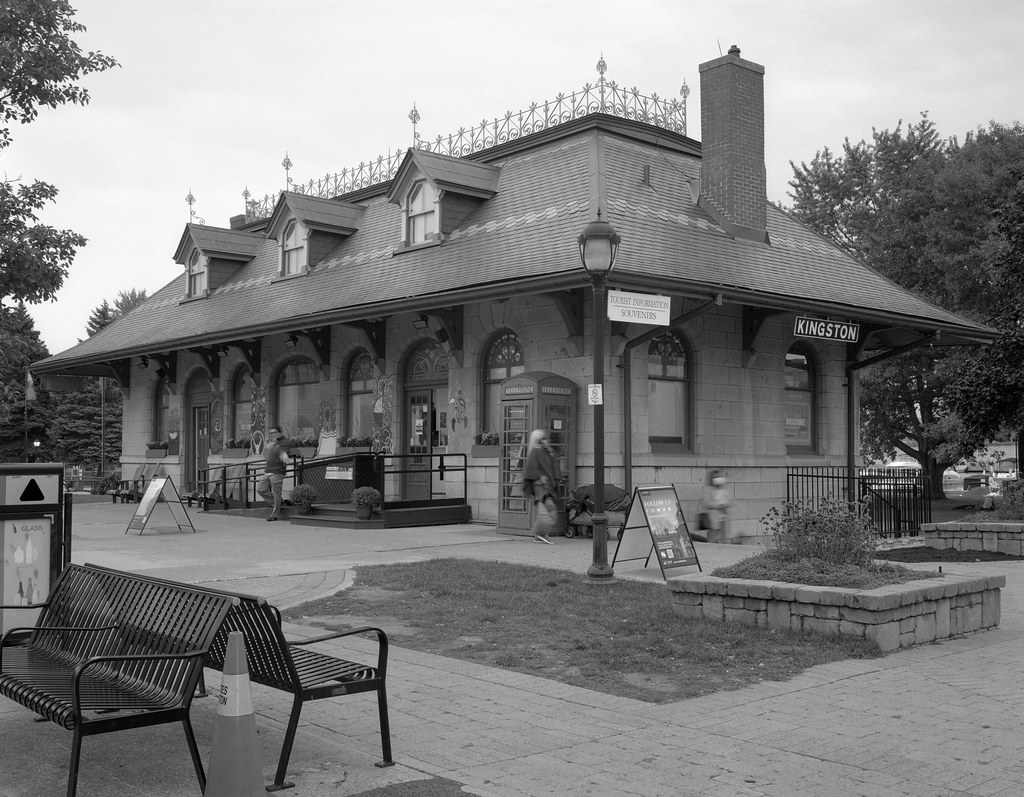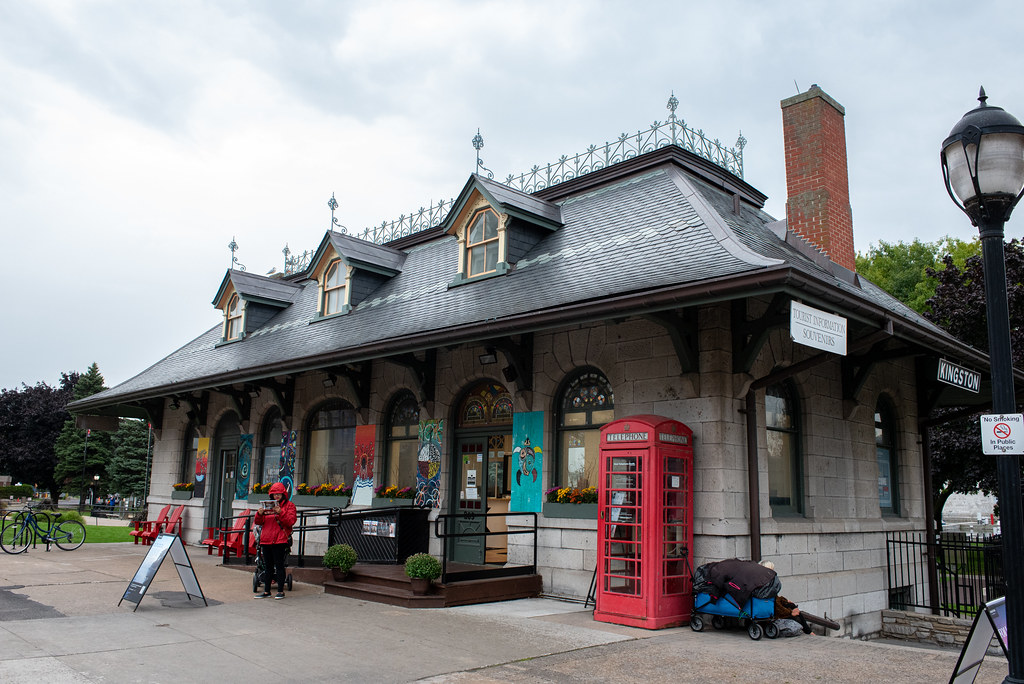Kingston’s tourist information centre is among the many former railway stations that have found a second life in Ontario. But it does seem a bit out of place in the downtown across from City Hall. This beautiful example of a Second Empire-styled station is no longer surrounded by the rails that once dominated the lakeshore area of Kingston. But the once industrial shorefront is now a beautifully restored section and is only complimented by the former inner station of the Kingston & Pembroke Railway.

Crown Graphic – Fuji Fujinon-W 1:5.6/125 – Ilford HP5+ @ ASA-200 – Pyrocat-HD (1+1+100) 9:00 @ 20C
The Kingston & Pembroke Railway is not widely known outside of the Kingston area, initially chartered in 1871 to expand timber and mineral resources in central Ontario. The goal is to provide a rail link between Kingston’s active harbour and Pembroke to provide freight and lesser passenger services. From the beginning, things did not go well for the operator; poor decisions on construction, material and route were the start of the problems. Second, the financial panic of 1873 only drove away investors. A restart in 1876 with new investment saw some movement on the rail line. Soon additional obstacles faced the line, namely Lake Carbogie and Shalbot Lake, which presented significant engineering troubles. It would not be until 1884 that the line reached Renfrew. The plan to continue to Pembroke slowly dropped as the Canada Central Railway line reached the community. Kingston & Pembroke stood at a measly 180 kilometres with a junction with Canada Central, an extension of the Brockville & Ottawa Railway. With the introduction of passenger services, the railway needed to complete railway stations for passengers. While most of the stations were simple wooden buildings, placing a station in Kingston required more attention to detail.

Nikon D750 – AF-S Nikkor 28-70mm 1:2.8D
Nikon D750 – AF-S Nikkor 28-70mm 1:2.8D
Since 1840 most new buildings in downtown Kingston have been constructed of limestone. The area where Kingston & Pembroke established their main yard and terminus station had, until 1875, a military reserve when it became a public park. At least until 1884, Kingston & Pembroke began constructing their central rail yards. Soon, the entire area was awash in rails; buildings supported freight for transfer to lake boats. A six-bay roundhouse provided maintenance facilities for the locomotives and a car shop. A branch line was linked to the Canadian Locomotive Company to the west. For passengers, a single-storey limestone station was built. The station featured a lighter limestone foundation with darker up to the roofline. While it followed mainly Italianate design, the Second Empire inspired the roof. A porte-cochère provided shelter for passengers as they waited for trains. Their baggage is being held in a separate building. Inside was an ample waiting room with gas lights, wainscoting, and hardwood floors. A ticket window and the station agent’s office filled the balance of the station’s interior. The windows and doors featured decorative stained glass transoms. Kingston & Pembroke did not have the best reputation as a passenger line and earned the nickname Kick & Push. Coming from the idea that passengers had to get out to help underpowered locomotives up steep grades. However, having an Inner Station proved helpful as it allowed passengers to move quickly to mainline outer stations for Grand Trunk and Canadian Pacific. Grand Trunk recognized the fact and constructed their inner station less than two hundred metres from the Kingston & Pembroke station.

Nikon D750 – AF-S Nikkor 28-70mm 1:2.8D
Nikon D750 – AF-S Nikkor 28-70mm 1:2.8D
By the turn of the century, the Kingston & Pembroke line had struggled. Freight from timber and mineral resources was running low, and passengers preferred the larger operators. And the line lacked any major strategic location, keeping it out of Grand Trunk’s and Canadian Pacific’s attention. At least until Canadian Pacific began moving additional locomotive contracts to the Canadian Locomotive Company. A 999-year lease agreement was signed in 1912, which turned into a total take-over in 1913. With the small Kingston & Pembroke line, locomotives could quickly move out of the factory and go all the way out into the western reaches. Canadian Pacific has had control of Canada Central since the mid-1880s. Although having a small rail yard and an inner station were well-received bonuses. The station continued to see moderate use through the first half of the century. As more personal automobiles were added, the need for an inner station became redundant, so the rail yard moved to diesel-electric motive power. It held on until 1966 when Canadian Pacific decided to shut everything down. The city moved quickly to get its hands on the entire railyard and station. While the yard buildings were swiftly demolished, the old station only lost the porte-cochère. A complete restoration was cleaned and renovated into a tourist booth, including a new basement and public washrooms. While the interior lost all its original configuration, the exterior and decorative elements were faithfully restored. Today the old station serves as a tourist information booth and remains in excellent condition.